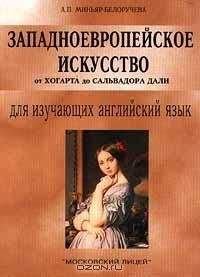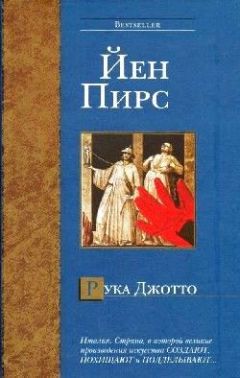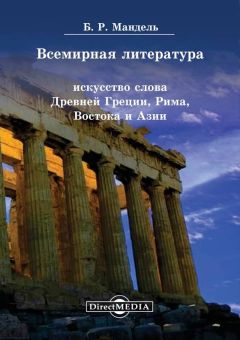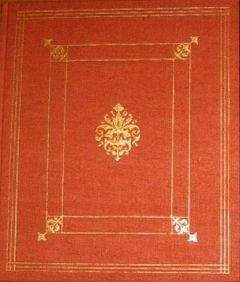А. Миньяр-Белоручева - Западноевропейское искусство от Джотто до Рембрандта
«Сикстинская Мадонна» — одно из самых вдохновенных произведений художника. В этой картине сочетается жизненная правдивость образа с чертами идеального совершенства.
В последние годы жизни Рафаэль помимо живописи занимался также архитектурой, в которой проявил себя как один из крупнейших мастеров своего времени.
VIII. Summarize the text.
IX. Topics for discussion
1. Raphael as the artist of the High Renaissance ideal of harmony.
2. Raphael's frescoes.
3. The High Renaissance heritage.
Unit VIII Titian (1490-1576)
The monarch of the Venetian School in the sixteenth century was Titian. A robust mountaineer came to Venice as a boy from the Alpine town of Pieve di Cadore and lived well into his nineties. The young painter was trained in the studios of both Gentille Bellini and Giovanni BellinI. Then he assisted Giorgione with the lost frescoes that once decorated the exteriors of Venetian palaces.
Once independent, Titian succeeded in establishing colour as the major determinant. Although he visited central Italy only in 1545-46, Titian was aware, probably, by means of engravings, of what was going on in Florence and Rome and assimilated High Renaissance innovations to his own stylistic aims. Titian generally began with a red ground, which communicated warmth to his colouring; over that he painted figures and background often in brilliant hues.
Titian's life was marked by honours and material rewards. He made himself wealthy. His palace in Venice was the centre of a near-princely court, fulfilling the worldly ideal of the painter's standing as formulated by Leonardo da VincI. In 1553 Titian began his acquaintance with the Emperor Charles V. There is a legend that the Emperor, on a visit to Titian's studio, stooped to pick up a brush the painter had dropped. Titian was called twice to the imperial court.
An early work, painted by Titian about 1515, is known as Sacred and Profane Love. The subject of this enigmatic picture has never been satisfactorily explained. Two women who look like sisters sit on either side of an open sarcophagus, which is also a fountain in the glow of late afternoon. One is clothed, another is nude save for a white scarf. The shadowed landscape behind the clothed sister leads up to a castle, toward which a horseman gallops while rabbits play in the dimness. Behind the nude sister the landscape is filled with light, and huntsmen ride behind a hound about to catch a hare, while the shepherds tend their flocks before a village with a church tower, touched with evening light. Cupid stirs the waters in the sarcophagus-fountain. The picture becomes a glorification of the beauty and redeeming power of love. Sometimes it is interpreted as the passage from virginity through the water of suffering, a kind of baptism, to a new life in love.
Titian made a series of mythological paintings for a chamber in the palace of the duke of Ferrara. One of these, the Bacchanal of the Andrians, of about 1520, is based on the description by the third-century Roman writer Philostratus of a picture he saw in a villa near Naples. The inhabitants of the island of Andros disport themselves in a shady grove. The freedom of the poses (within Titian's triangular system) is completely new. Titian has taken the greatest visual delight from the contrast of warm flesh with shimmering drapery and light with unexpected dark.
Like his mythological pictures, Titian's early religious paintings are affirmations of health and beauty. The Assumption of the Virgin, 1515-18, is his sole venture into the realm of the colossal. It represents the moment when the soul of the Virgin was reunited with her dead body. Above the powerful figures of the Apostles on earth, Mary is lifted physically into a golden Heaven on a glowing cloud by numerous child angels, where she is awaited by God the Father. The bright reds, blues, whites of drapery, the rich light of the picture carry Titian's triumphant message through the spacious interior of the Gothic Church of the Frari in Venice.
In the Madonna of the House of Pesaro, 1519-26, Titian applied his triangular compositional principle to the traditional Venetian Madonna group. The symmetry is broken up by a radical view from one side. The scene is a portico of the Virgin's palace. At the steps plunging diagonally into depth Titian painted the kneeling members of the Pesaro family and an armoured figure who gives the Virgin as a trophy a Turk, taken in battle. The columns are seen diagonally, their capitals are outside the frame. At the top clouds float before the columns, on which stand child angels with the Cross. The colours are rich and deep.
Titian's portraits do not often sparkle with colour as the male costume of the sixteenth century was black. In his Man with the Glove Titian's triangular principle is embodied in the balanced relationship of the gloved and ungloved hands to the shoulders and the youthful face. The carefully modelled hands and features are characteristic of Titian's portraits. Even in this picture, dominated by black and by the soft greenishgray background, colour is everywhere dissolved in the glazes, which mute all sharp contrasts.
A subject that occupied Titian in his mature years is the nude recumbent Venus – a pose originally devised by Giorgione. In 1538 Titian painted the Venus of Urbino for the duke of Camerino. The figure relaxes in ease on a coach in a palace interior whose inlaid marble floor and wall hangings make gold, greenish, soft red-and-brown foil for her beautiful body, the floods of her warm, light brown hair. Pure colour rules in the picture of Titian's middle period. In his later years form appealed to Titian less; substance itself was almost dissolved in the movement of colour.
In 1546 Titian painted a full-length Portrait of Pope Paul III and his Grandsons. Undoubtedly, this painting was carried to a point that satisfied both artist and patron. The brushstrokes are free and sweeping. But the question still arises whether the picture is really finished. The sketchy technique characteristic of the backgrounds in Titian's early works was applied by the artist to the whole picture. Veils of pigment transform the entire painting into a free meditation in colour. Colour indeed, is the principle vehicle of Titian's pictorial message.
In the works of his extremely old age, form was revived and colour grew more brilliant. Titian's late paintings of pagan subjects are unrestrained in their power and beauty. The devices of rapid movement and excellent colour, ignoring details were used to increase emotional effect in the very late Crowning with Thorns, probably painted about 1570, six years before the artist's death. The hail of brushstrokes creates cloudy shapes. The agony of Christ and the fury of his tormentors are expressed in storms of colour. The last religious works of Titian reached a point beyond which only Rembrandt in the seventeenth century could proceed.
Make sure you know how to pronounce the following words:
Titian; Giorgione; Venus; Cupid; Venice; Venetian; Gothic; bacchanal; Veronese; sarcophagus; Naples; Alpine; Susannah; profane
NotesSacred and Profane Love – «Любовь земная и небесная»
Bacchanal of the Andrians – «Вакханалия»
Assumption of the Virgin – «Ассунта»
Madonna of the House of Pesaro – «Мадонна Пезаро»
Man with the Glove – «Юноша с перчаткой»
Venus of Urbino – «Венера»
Portrait of Pope Paul III and his Grandsons – «Портрет Папы Павла III с Алессандро и Оттавио Фарнезе»
Crowning with Thorns – «Бичевание Христа»
TasksI. Read the text. Make sure you understand it. Mark the following statements true or false.
1. The subject of the Sacred and Profane Love has been sufficiently determined.
2. Titian never ventured into the realm of the colossal.
3. The recumbent pose was originally devised by Leonardo.
4. The colours in the Madonna of the House of Pesaro are deep.
5. Titian's portraits sparkle with colour.
6. Titian's last religious works have never been surpassed.
II. How well have you read? Can you answer the following questions?
1. Where did Titian come from? Where was he trained?
2. How did Titian implement Leonardo's ideal of the painter's standard? Was he treated like equal by the princes of his time? Can you prove it?
3. What mythological pictures are analysed in the text?
4. What does the Sacred and Profane Love represent? What is there in the background? What does Cupid do? What does this picture glorify? What colours dominate in this painting? How is this work of art interpreted?
5. What is depicted in the Bacchanal of the Andrians?
6. What religious paintings are described in the text? What is depicted in these pictures? What differs one picture from another? How are Madonnas shown? What do these pictures symbolize?
5. What portraits are mentioned in this text? How did Titian portray the sitters? Where did Titian apply his triangular principle?
6. What did Titian's latest work depict? What devices did Titian use to express the agony of Christ and the fury of his tormentors?
III. I. Give Russian equivalents of the following phrases:
the exteriors of Venetian palaces; to foil for; brushstrokes; free meditation in colour; pagan subjects; freedom of poses; by means of engravings; sarcophagus; carefully modelled hands; mythological and religious pictures; to break up the symmetry; a radical view from one side; to mute all sharp contrasts; the rich light of the picture; the picture is interpreted as; a triangular principle; veils of pigments; a palace interior; in the mature years; to apply a sketchy technique to; movement of colour; inlaid floor, wall hangings; a recumbent pose; altarpieces; shimmering drapery.
II. Give English equivalents of the following phrases:
картины на мифологические и христианские сюжеты; звучная живописная гамма; в зрелом возрасте; тенистый пейзаж; инкрустированный пол; шпалеры; лессировка; тщательно выписанные руки; принцип треугольника; заказать картину; применить технику наброска к; алтарные образа; картина трактуется как; творческое наследие; нарушить симметрию; движение цвета; подчеркнуть путем контраста; фасады венецианских дворцов; приглушать яркие краски, грунтовка.
III. Make up sentences of your own with the given phrases.
IV. Arrange the following in the pairs of synonyms:
a) to disport; to foil for; recumbent; determinant; to glorify; allegorical; shimmering; characteristically; frescoes; to redeem;
b) to contrast with; reclining; to worship; to entertain; element; mythological; glowing; to protect; murals; predominantly.
IV. Here are descriptions of some of Titian's works of art. Match them up to the given titles.
1. The soul reunited with the body to be lifted corporally into Heaven.
2. The agony of Christ is expressed in storms of colour.
3. The figure relaxes in ease on a coach in a palace interior.
4. The triangular principle is embodied in the balanced relation ship of the gloved and ungloved hands to the shoulders and the youthful face.
5. The people disport themselves in a shady grove.
6. Two women sit on either side of an open sarcophagus.
7. The columns are seen diagonally.
8. The sketchy technique was applied to the whole picture.
a. Madonna of the House ofPesaro
b. Portrait of Pope Paul III and his Grandsons
c. Crowning with Thorns
d. Sacred and Profane Love
e. Venus of Urbino
f. Assumption of the Virgin
g. Bacchanal of the Andrians
h. Man with the Glove
V. Replace the expressions in italics in the following sentences with expressions from the text which have the same meaning.
1. Titian helped Giorgione to restore the external murals of the Venetian palaces. 2. When Titian became free he succeeded in establishing colour as the main element. 3. The painting worships the protecting power of love 4. The people of the island of Andros entertain themselves in a dark forest. 5. A pose of reclining Venus was initially invented by Giorgione. 6. The Assumption of the Virgin is Titian's single endeavour into the realm of the tremendous. 7. The smooth and carefully modelled hands and features are typical for Titian's portraits. 8. Titian's late works of art of heathen subjects are free in their power and beauty.
VI. Insert the missing prepositions. Translate the text. Retell the text.
Susannah at her Bath,… Jacopo Robusti, called Tintoretto,… 1560, can be considered as one… the great works… Venetian Mannerism. The story… Susannah, the Biblical «Heroin… Chastity», is taken… the Old Testament. Two men secretly entered her garden while she was… her bath unaware… their presence. When she rejected their advances they accused her falsely… her husband. Only the prophet Daniel's wise judgement saved her… the death sentence which had been passed… her alleged adultery. Here Tintoretto uses the characteristic Mannerist device… exaggeration and distortion in his drawing to portray the innate tension… that moment… the story. The sharp contrast… light and darkness,… terrifying proximity and the far distance, all contribute… the surprise and admiration that the picture evokes. Over and above all these Mannerist tricks lies the magic of Venetian painting… its preference… brownish-hues expressed… clearly visible brushstrokes.
VII. Insert the article wherever necessary. Translate the text. Retell the text.
The Raising of the Widow's Son in Nian, around 1565/70, was painted by… Veronese when his colour achieved… clarity and brilliance hitherto unknown in… Venice. He uses… sky and architecture as… cool foil for… jewel-like colour of… clothing. It gives… worldly, festive atmosphere to… New Testament story of how Christ raised… young man from… dead. Veronese has put… figure of… grateful mother into… centre of… picture and… young man who has been raised from… dead is only just visible in… lower left-hand corner… picture is thought as if it were… quotation from… play with… figures and architecture scattered around. In this way Veronese draws… observers into… action and, as so often in… Mannerist art, mixes… levels of reality.




